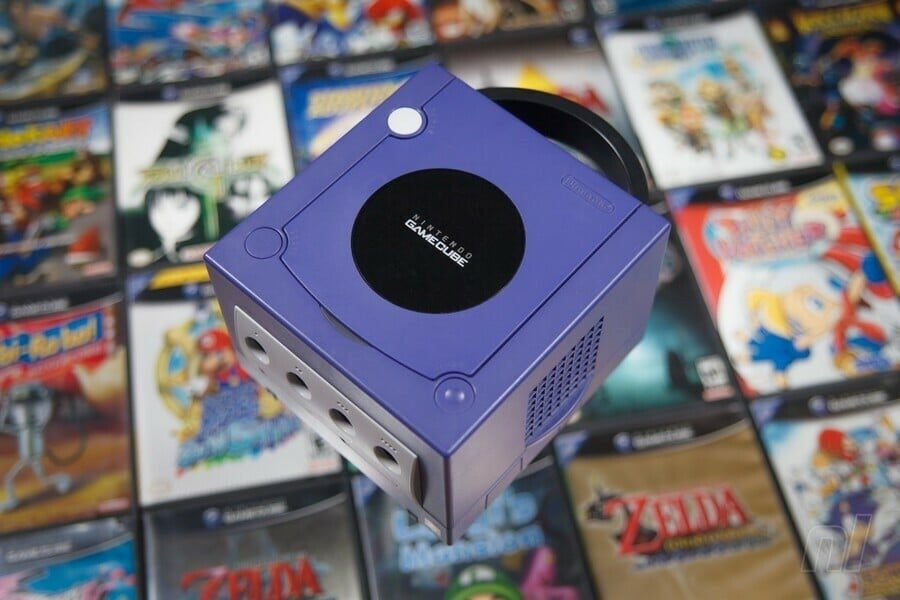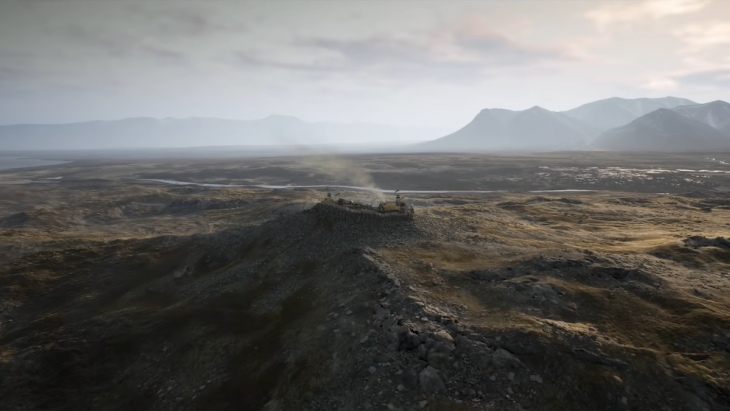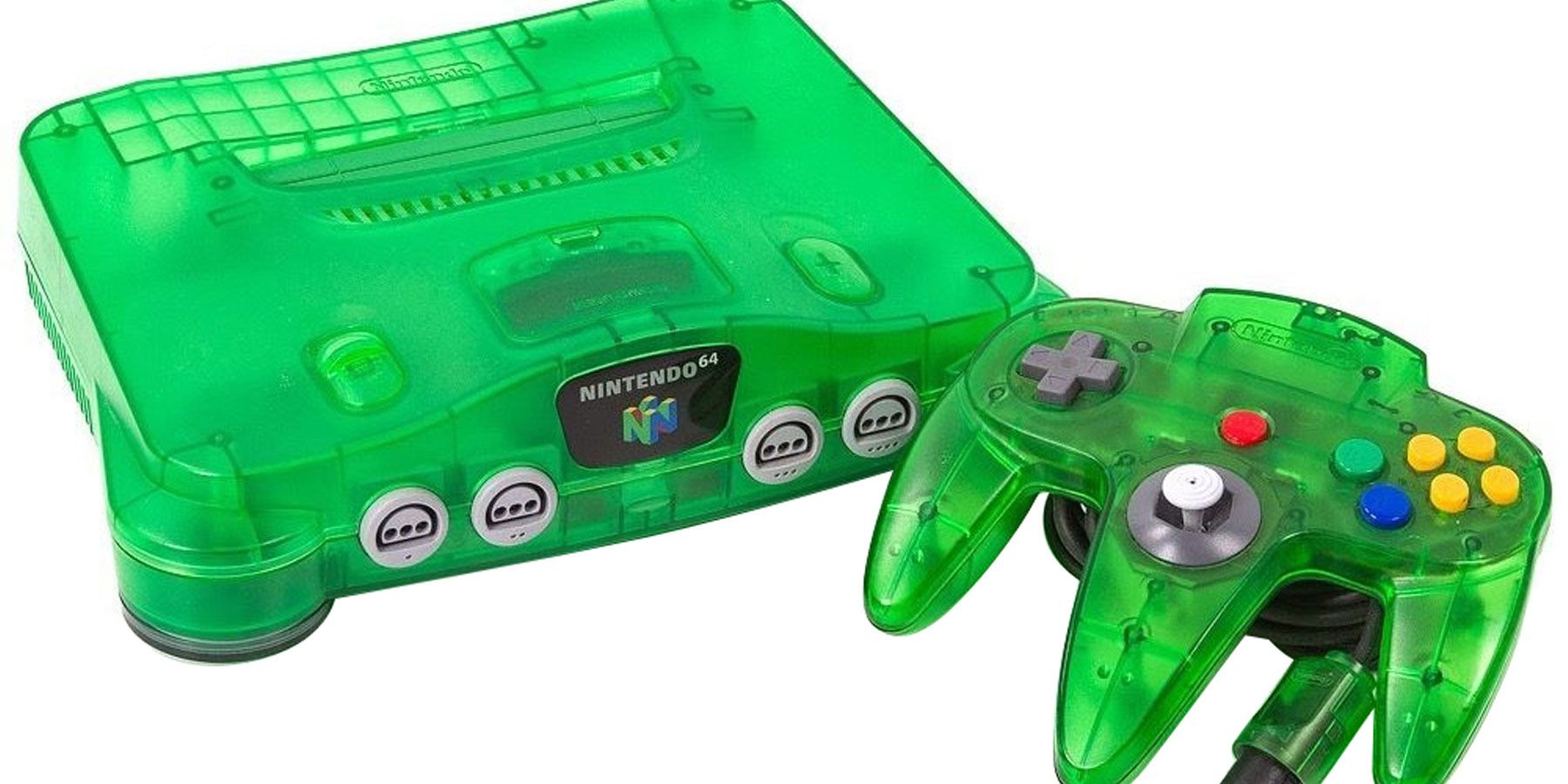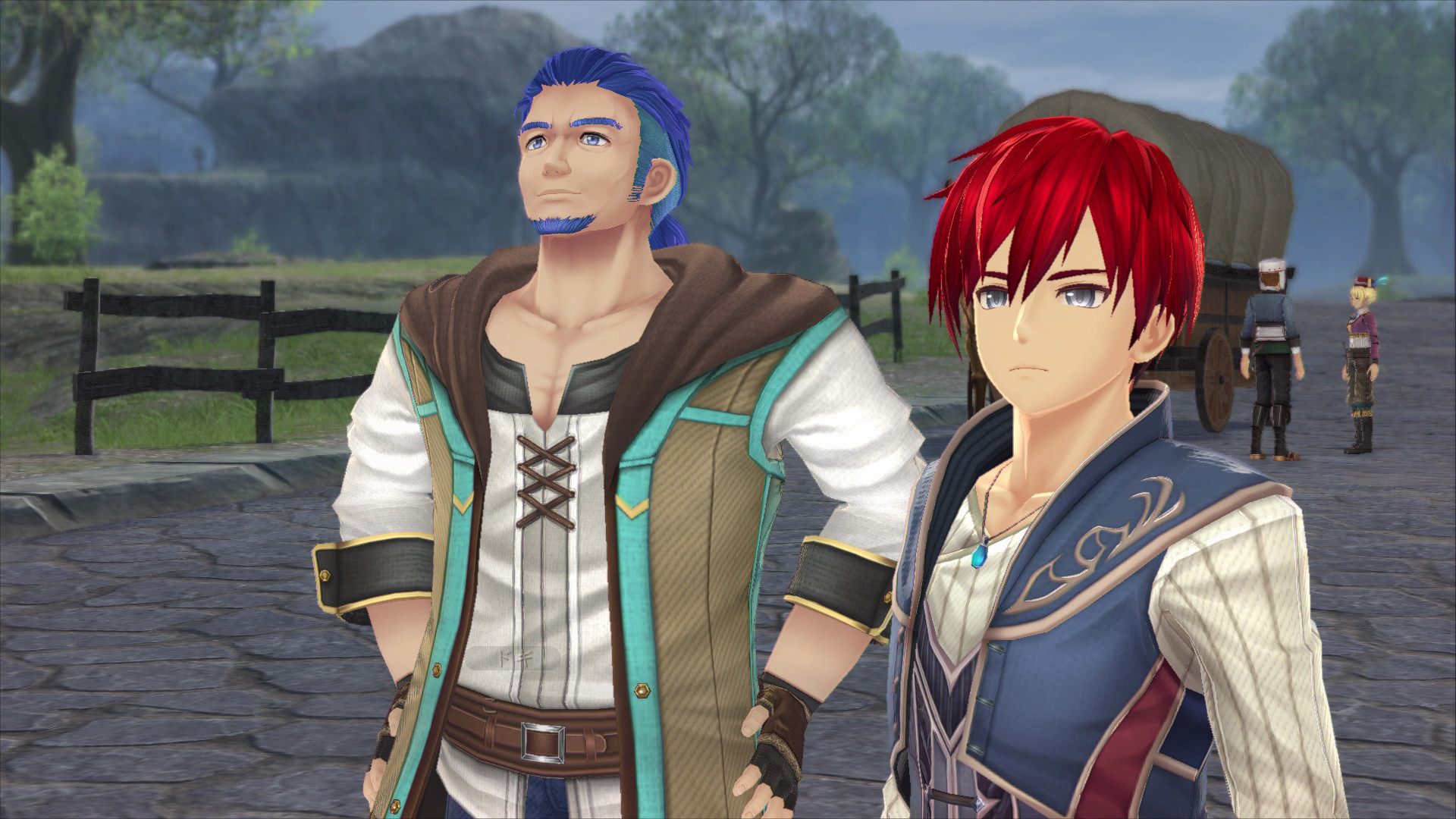
In celebration of the GameCube's 20th birthday, we're republishing this look back at Nintendo’s little box of tricks…
In many ways, the GameCube was a console out of time, arguably arriving too late (or perhaps too early) to realise its true potential. We can look back now and appreciate its quirks, admire its design and excellent software library, and lust after the variants that never made it to western shores, but in the early 2000s it was a big, defiantly colourful block with a chunky handle at a time when sleek multimedia units were all the rage. It was a square peg in the round hole, an embarrassingly sore thumb that stood out against the laser-targeted ‘cool’ of the competition. It’s not by accident that the decade-long period straddling the millennium is looked back on as the ‘PlayStation generation’.
For want of a better adjective, it's a very 'Nintendo' console, the result of the platform holder regrouping following its first hardware 'wobble' with the Nintendo 64. For the first time in its history, the company entered a console generation with a bloody nose. While the console wars may have raged in the west, back home in Japan Sega’s Mega Drive failed to impact Nintendo's market share in the same way and it wasn’t until Sony arrived on the scene – spurned and determined after being stabbed in the back over the Nintendo Play Station – that the Kyoto company really began to feel the heat. For all the joys and advancements Nintendo 64 offered players in the nascent field of 3D gaming, obtuse tools and expensive cartridges meant it wasn’t a developer-friendly system.
The new console, codenamed Dolphin, was a conscious attempt to address some of the issues that its predecessor had thrown up. The system’s ‘Flipper’ GPU was made by ArtX, a new company made up of former Silicon Graphics, Inc. employees who had designed the N64’s GPU before fleeing to set up their own shop. Having familiar faces onboard enabled Nintendo’s engineers to easily communicate which pitfalls it wished to avoid this time round.
Nintendo was determined to make the console affordable and keep it within reach of a younger audience. Officially revealed at a press conference at E3 in 1999, Howard Lincoln emphasised in a grandstanding, provocative speech how inexpensive Dolphin would be, as well as how it would “equal or exceed anything our friends at Sony can come up with for PlayStation 2”.
Nintendo flirted with the idea of a special LCD screen that attached to the console itself and would display stereoscopic 3D. As detailed in an Iwata Asks interview released at the launch of the Nintendo 3DS, the company had a working version of launch game Luigi’s Mansion up and running for the device, but manufacturing costs made the unit prohibitively expensive at the time, so that would have to wait a decade to come to fruition on the 3DS.
The controller was another area where pains were taken to advance on what had come before. Rumble became an in-built feature, the shoulder buttons had analogue sensitivity and the yellow C-buttons of its predecessor morphed into a second analogue nub of the C-stick. The four face buttons were reconfigured and reshaped to make them easy to identify through touch alone. Despite an undersized and arguably unsatisfying D-pad, the GameCube controller is very comfortable in the hands and still has its champions today (many Smash Bros. fans still swear by it).
Dreamcast had led the charge in the sixth console generation, but through a series of poor decisions, company in-fighting and mismanagement, Sega scuppered itself before GameCube even launched; Sony were the main competition now. And so, after several delays (a lack of software being the primary reason), the console launched in Japan on the 14th September 2001, with the North American launch coming just over two months later and Europe getting the 'Cube in May the following year. Priced at £129 / $199, it undercut the PlayStation 2 by a not-inconsiderable £70 / $100 and forced Microsoft into cutting the price of the original Xbox to at least bring it in line with Sony’s console.
PS2 had a year’s head start, but despite designing the console to be as dev-friendly as possible, Nintendo — whether by accident or design — utterly failed to get dev kits into the hands of third parties in a prompt fashion, and forcing third parties to play catch-up wasn't the best way to ingratiate themselves after the difficulties of the Nintendo 64 era. However, arguably the company's biggest misstep occurred with its choice of launch game for the console.
Super Mario 64 was a seminal release in video gaming history, a killer app that arguably kept Nintendo 64 alive during the intense software drought that accompanied that console’s launch (and would go on to characterise its cycle in comparison to the deluge of games releasing on PlayStation). The GameCube didn’t have a similarly revolutionary launch game in Luigi’s Mansion, and while it has come to be appreciated on its own terms, the perception back in the day was that Nintendo was fielding the B-team. However unfair the comparison, the awe-inspiring history of Mario games launching alongside Nintendo systems (Super Mario Bros., Super Mario World and Super Mario 64) was precedent for a similarly revolutionary launch title. Luigi’s Mansion wasn’t what gamers expected or wanted back in 2001.
Nintendo misjudged the evolving tastes of gamers who’d grown up with the SNES and continued targeting the same demographic it always had while Sony expertly co-opted anxious teenagers desperate to distance themselves from childish things. Nintendo also failed to anticipate (or simply didn’t care about) the reactions of western gamers to the console’s form factor and games. Much in the same way that Microsoft’s hulking Xbox simply didn’t reflect the tastes of Japanese gamers, GameCube was a hard sell in the west despite having Nintendo’s IP. The carry handle, for example, was a fun addition intended to make the console easily portable within Japanese homes, shifting from the living room TV to a bedroom with the minimum of fuss. In the west, it arguably gave the impression of a Fisher-Price ‘My First Game Console’ – anathema to the achingly self-conscious gamers wanting to play DVDs and ‘grown-up’ games on PS2 or Xbox. There’s a reason that the Panasonic Q retains an incredible allure in the minds of western fans – it’s the sexier ‘adult’ version of the hardware we never got.
Even Nintendo’s line up of IP and franchises seemed to work against it this generation. Compared to the gritty games released for PlayStation 2 – titles like God of War, Gran Turismo 3, GTA: San Andreas and Metal Gear Solid 2 and 3, to name a few – the colourful characters of the Mushroom Kingdom seemed more 'kiddy' than ever before, and an entire generation of gamers decided Nintendo was no longer for them. Nowhere is this more clear than the ‘Celda’ controversy from Space World 2001.
A GameCube tech demo had been shown the previous year at Nintendo’s very own industry event which caught the imaginations of Nintendo fans. Link and Gannondorf from Ocarina of Time were locked in combat in a clip that only lasted around 20 seconds but looked incredible compared to the blocky, polygonal visuals of the N64. Cut to the same event one year later and the ravenous Nintendo crowd who had been dreaming of a ‘realistic’ Zelda were treated to a reveal that transformed Link into a cartoon. The backlash was instant and that would be the final Space World event. Time has been kind to The Wind Waker and nowadays even the staunchest critics tend to admit that The Wind Waker is – despite flaws – a bit special. Still, at the time Toon Link was emblematic of how out-of-step Nintendo was with the gaming masses.
Although it lacked a Mario game, the system still had some strong offerings at the beginning. You can’t go wrong with Star Wars game in a launch line up, and unlike N64 with the (still hugely popular) Shadows of the Empire, GameCube had a genuinely brilliant one in the form of Star Wars Rogue Squadron II: Rogue Leader – Factor 5’s arcade-style space shooter still looks beautiful 18 years later. Also there from the very start was Sega with Super Monkey Ball – yes, following the untimely demise of the Dreamcast, Nintendo’s old rival wasted no time in jumping on other platforms and we soon witnessed the previously unthinkable event of Sonic the Hedgehog appearing on a Nintendo system.
GameCube would steadily accrue quite the library of classics with games like Wave Race: Blue Storm, Pikmin, Super Smash Bros. Melee, the Resident Evil remake, Metroid Prime, Super Mario Sunshine, Animal Crossing (a version of the N64 original debuting in the west), Eternal Darkness, F-Zero GX, the aforementioned Wind Waker and its generation-hopping follow-up Twilight Princess giving the console some truly brilliant, heavy-hitting exclusives. These were bolstered by quality cross-platform efforts such as Spider-Man 2, Need for Speed: Most Wanted, SoulCalibur II (with Link as an exclusive fighter) and Beyond Good & Evil. Resident Evil 4 helped give the GameCube some street cred, but Capcom decided to announce a PS2 port before the previously Nintendo-exclusive game had launched.
Software certainly wasn’t as abundant as it was for Sony’s console, though, and Nintendo gave up a significant asset in the form of second-party studio Rareware. Much to the surprise of onlookers (and the Stamper brothers who ran the company) Nintendo declined to extend its 49% share in Rare and buy it outright. So, in 2002 Microsoft snapped up the second-party studio who had arguably kept good ship ’64 afloat in the previous generation with a string of hits. The disappointing Star Fox Adventures would be the only Rareware game released on the ‘Cube and the developer’s absence was keenly felt.
A number of accessories and peripherals were released over the years, most notably the excellent wireless WaveBird controller and the Game Boy Player which sat neatly beneath the console. Broadband and dial-up adapters were available but had extremely limited support, with Phantasy Star Online being the only real reason to own one (unless you fancied some 16-player LAN races in Mario Kart: Double Dash!!). Arguably the most fun peripherals were the DK Bongos, a pair of bongo drums with an built-in microphone which was used in the Donkey Konga rhythm games and Donkey Kong Jungle Beat (and are still used to this day by intrepid gamers seeking to up the challenge of their favourite games).
Unfortunately, despite some brilliant games, Nintendo was fighting a losing battle. The PS2 had dug trenches long before GameCube arrived on the battlefield, and with Microsoft now muscling in on another front, Nintendo found itself boxed in. Console sales were initially strong, but they slowed and by the end of the generation Nintendo found itself in third place as Sony took the lion’s share of the market once again.
GameCube was undoubtedly a commercial disappointment, if not an outright failure for Nintendo. According to its own figures, the console achieved lifetime sales of 21.74 million. To put that in perspective, N64 sold 32.93 million units and at the time of writing there are 89.04 million Switches in the wild four-and-a-half years since the hybrid console’s launch — only Wii U has sold less than the GameCube. Fortunately, Nintendo was buoyed at the time by the overwhelming success of its handheld business, so while sales might have been sobering, there was never any danger of a Sega-like exit from the hardware industry.
Ultimately Nintendo would burst out of those cube-shaped confines, changing the conversation with its next console. If it was out-of-step with gamers, the solution was simply to expand the definition of gaming to encompass a whole new ‘mass’ of players, and the experiments and technology from the GameCube era were key to Wii's development. The old joke that the Wii is just two GameCubes duct-taped together might be an exaggeration, but the ‘Cube’s ‘Flipper’ chip was the basis for Wii’s ‘Hollywood’ equivalent, just as the IBM’s 'Broadway' chip shared the PowerPC architecture of GameCube's 'Gekko' CPU. The core of the console would arguably go on to power a revolution, and while there may only be around 21 million GameCubes in the wild, the vast majority of the 101.63 million Wiis out there also play those cute little discs. Couple that with its library of incredible games and — regardless of the sales numbers — it's very hard to see GameCube as anything but a triumph.


